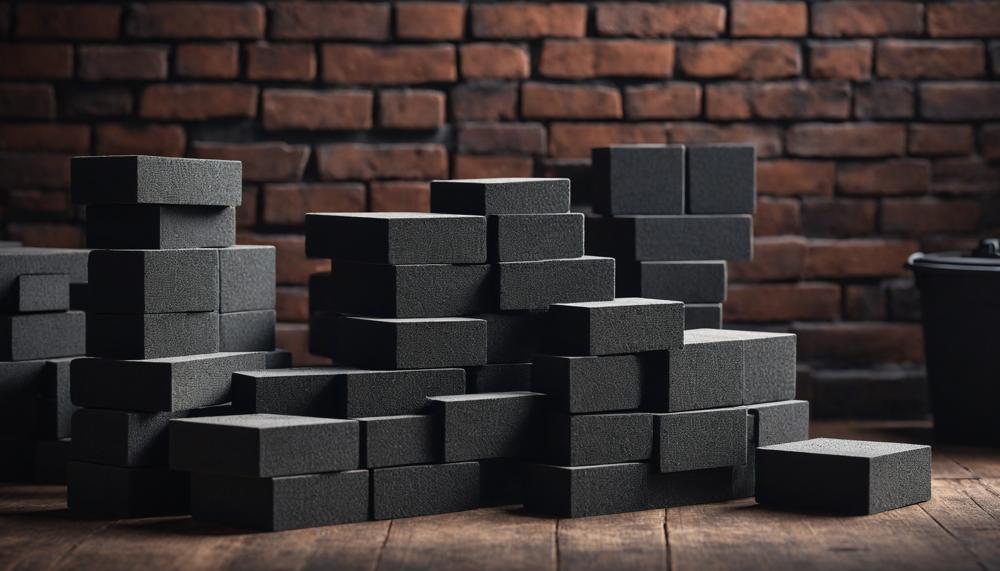Disposing of bricks may seem straightforward, but it’s crucial to handle them properly to avoid unnecessary costs and environmental impact.
Whether you’re renovating your home, demolishing a structure, or simply clearing out excess building materials, knowing how to throw away bricks efficiently can save you time and money.
Here are the key ways to dispose of bricks:
- Renting a Dumpster: Ideal for large-scale projects. Dumpsters come in various sizes, making them convenient and cost-effective. Once filled, the rental company handles the removal.
- Hiring a Junk Removal Service: A hassle-free option where professionals schedule and handle the removal of your bricks.
- DIY Disposal: For smaller quantities, taking bricks to a local landfill or transfer station is viable. Ensure the facility accepts construction debris.
- Repurposing or Recycling: Bricks can be reused in DIY projects or given away for free, promoting sustainability and reducing waste.
- Cost Considerations: The expense varies by method and volume, with dumpsters generally being the most economical and efficient for large amounts.
Proper disposal ensures compliance with local guidelines and helps keep your project on track. Dive into the details below to choose the best method for your needs.
Contents
The Complete Brick Disposal Guide
When disposing of bricks, various methods are available, each with its own environmental impact. Here are the primary methods:
| Method | Description | Environmental Impact |
| Recycling | Bricks can be recycled if clean and free from mortar. They are crushed and used as aggregate material in construction. | High environmental benefit as it reduces the need for new raw materials and minimizes landfill use. |
| Repurposing | Reuse bricks in new construction projects, DIY garden paths, or decorative walls. Donate to community projects or sell them. | Most environmentally friendly, as it avoids waste and provides materials for new uses without additional processing. |
| Dumpster Rental | Rent a dumpster to collect and dispose of large quantities of bricks. Convenient for significant renovation projects. | Moderate impact; while convenient, it typically leads to landfill disposal unless the service includes recycling options. |
| Junk Removal Service | Hire a service to pick up and dispose of bricks. Scheduled removal can be handy for large-scale clean-ups. | Moderate impact similar to dumpster rental, dependent on whether the service recycles or landfills the bricks. |
| Local Landfill or Transfer Station | Transport bricks to a local landfill or transfer station that accepts construction waste. | Least environmentally friendly, as bricks are non-biodegradable and occupy significant landfill space. |
Most Environmentally Friendly Method: Repurposing bricks is the best method. Using them in new construction, garden projects, or donating them prevents waste and gives the bricks a new life. This approach maximizes resource efficiency and minimizes environmental impact.
Top 3 Brick Disposal Options
The top three options for disposing of bricks are repurposing them for new projects, donating or selling them, and using them as aggregate material. Among these, repurposing bricks is the most environmentally friendly option.
| Disposal Option | Description | Environmental Impact |
| Repurposing | Reusing bricks for new construction projects such as garden paths, patios, or walls. | Highly eco-friendly, reduces waste and the need for new materials, and minimizes landfill usage. |
| Donating or Selling | Giving away or selling bricks to individuals or organizations for small projects. | Eco-friendly, extends the life of the bricks and reduces demand for new ones, thus saving resources. |
| Using as Aggregate Material | Crushing bricks to use as a base material for roads or new construction. | Moderately eco-friendly, recycles bricks but involves energy consumption for crushing. |
How Much Does Brick Removal Cost?
The average cost for professional brick removal services typically ranges between £800 and £2,500. This variation largely depends on several critical factors, including the scope of the project, accessibility, and the location of the property.
Here’s a detailed breakdown of these costs:
| Project Size | Cost Range | Details |
| Small (e.g., chimney removal) | £500 – £1,000 | Involves minimal labour and disposal costs. |
| Medium (e.g., wall removal) | £1,000 – £2,000 | Requires more extensive labour and debris handling. |
| Large (e.g., entire structure) | £2,000 – £4,000 | Entails significant demolition, transportation, and disposal efforts. |
Factors Influencing Costs:
- Project Size: Larger projects require more time, labour, and equipment, increasing the overall cost.
- Accessibility: Difficult-to-reach areas may necessitate special equipment or techniques, adding to the expense.
- Location: Costs can vary by region due to differences in labour rates and local regulations. For example, urban areas may have higher costs due to stricter disposal requirements and higher labour expenses.
Additional charges may apply for the disposal of debris, which can range from £200 to £500 depending on the volume and disposal method. Professional services often include debris removal, but it’s essential to confirm this to avoid unexpected costs.
Costs of Various Brick Disposal Options

The average costs associated with different methods of disposing bricks—landfill disposal, recycling, and donation—vary significantly due to several factors such as location, volume, and service providers. Below is a detailed breakdown of these costs:
| Disposal Method | Average Cost | Details |
| Landfill Disposal | £50 to £100 per tonne | Landfill disposal is often the most straightforward but environmentally damaging option. Fees are based on weight, and additional charges may apply for transportation and environmental levies. This method contributes to landfill overcrowding and environmental degradation. |
| Recycling | £20 to £60 per tonne | Recycling bricks can be cost-effective and environmentally friendly. Costs include collection, transportation, and processing fees. Some facilities may offer lower rates if bricks are cleaned and sorted beforehand. Recycling helps reduce landfill waste and conserves resources. |
| Donation | Free to minimal costs | Donating bricks is the most sustainable option, often incurring little to no cost. Organizations or individuals might accept bricks for reuse in new construction or smaller projects. Transportation costs may be the only expense, and sometimes even these are covered by the recipient. This method promotes resource repurposing and reduces environmental impact. |
Each disposal method offers distinct benefits and drawbacks. Landfill disposal is convenient but costly and harmful to the environment. Recycling is more sustainable and cost-efficient but requires effort in cleaning and sorting bricks. Donation is the most eco-friendly and cost-effective, fostering community projects and resource conservation.
Options for Recycling and Repurposing Your Old Bricks
There are numerous imaginative and practical ways to give old bricks a new lease on life. Here are some creative ideas:
| Project | Description | Benefits |
| Garden Paths | Lay old bricks to create charming garden paths, adding a rustic touch to your garden. | Enhances garden aesthetics, provides durable walkways, and promotes drainage. |
| Patios | Use bricks to build a cosy patio area for outdoor relaxation and entertainment. | Creates a sturdy, stylish outdoor space; easy to maintain. |
| Fire Pits | Construct a fire pit with old bricks, ensuring to include fire bricks to withstand high temperatures. | Offers a gathering spot for warmth and cooking; adds value to your backyard. |
| Planters | Build raised garden beds or planters with bricks to cultivate herbs, flowers, or vegetables. | Utilizes vertical space, improves soil drainage, and enhances garden structure. |
| Outdoor Grills | Create a sturdy, custom-built grill using old bricks, paired with fire bricks for safety. | Provides a personalised cooking area; durable and weather-resistant. |
| Side Yard Upgrades | Enhance side yards by using bricks to edge flower beds or line pathways. | Improves yard organisation and aesthetics; defines garden areas. |
| Retaining Walls | Construct retaining walls to manage soil erosion and create tiered garden spaces. | Prevents soil erosion, adds structure, and maximises usable garden space. |
| Decorative Features | Use bricks to craft decorative garden features like arches, benches, or sculptures. | Adds unique, personalised touches to your garden or outdoor space. |
Conclusion
Properly disposing of bricks is more than just a simple task—it’s an essential step to manage waste responsibly and sustainably. Whether you’re engaged in a major renovation, demolishing a structure, or just clearing out surplus materials, knowing the best ways to handle brick disposal can save both time and money.
There are several efficient methods to consider:
- Dumpster Rental: For large projects, renting a dumpster is convenient and cost-effective. It allows you to handle significant volumes of bricks, with the removal managed by the rental company.
- Junk Removal Services: These services provide a hassle-free way to get rid of bricks, perfect for those who prefer a hands-off approach. Professionals handle the scheduling and removal, simplifying the process.
- DIY Disposal: For smaller quantities, taking bricks to a local landfill or transfer station is a viable option. Ensure the facility accepts construction debris to avoid any issues.
- Repurposing or Recycling: This method is the most eco-friendly. Reusing bricks in DIY projects or donating them reduces waste and promotes sustainability.
Each disposal method comes with its own environmental impact. Repurposing and recycling are the most beneficial for the environment, reducing the need for new materials and minimizing landfill use. In contrast, landfill disposal, although straightforward, is the least environmentally friendly due to the non-biodegradable nature of bricks.
Costs vary based on the chosen method and project scale. Dumpster rentals and professional services might be more expensive but are ideal for large projects. DIY disposal and repurposing can be more cost-effective, especially for smaller amounts of bricks.
Ultimately, selecting the right disposal method ensures compliance with local regulations and keeps your project on track while promoting responsible waste management.





